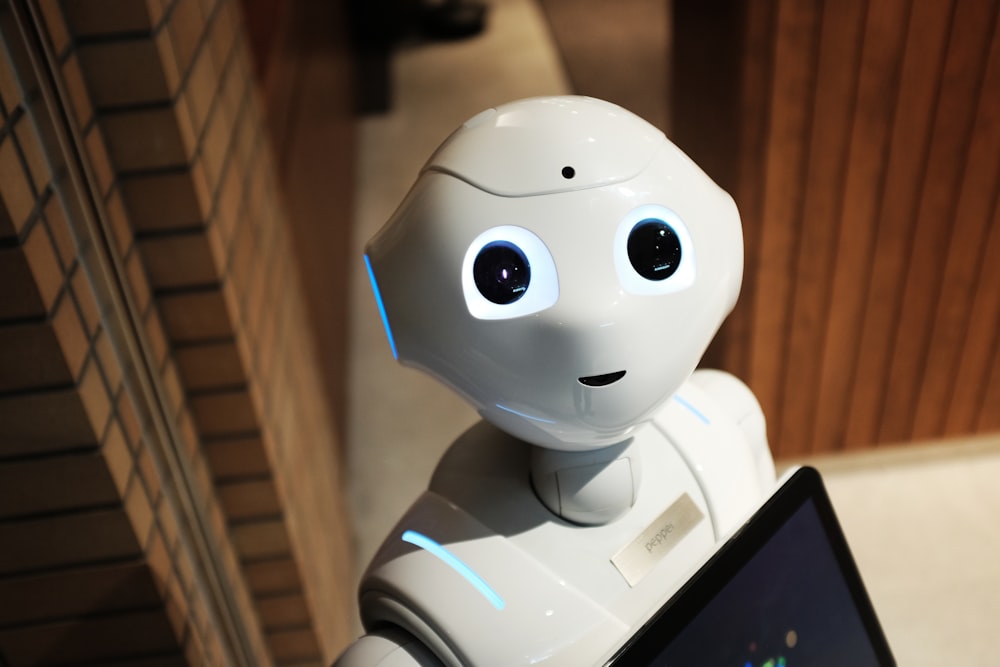Humanoid Robotics: Ten Converging Technologies Powering A Trillion-Dollar Revolution
Image Source: Unsplash
Get ready for the next multi-trillion business model: Robotics-as-a-Service (RaaS). In a recent captivating podcast, Betting on Bots: 13D's Woody Preucil on the Global Robotics Boom, Woody Preucil, senior managing director at 13D Research and Strategy, shared why humanoid robots are set to revolutionize our world. He unpacked how ten cutting-edge technologies are converging to fuel this megatrend, how global demographic shifts—particularly in countries like China—are accelerating widespread adoption, and how these robots could reshape industries, economies, and even our everyday lives. Here’s the scoop on his insights.
The Convergence of Ten Game-Changing Technologies
Preucil kicks off by highlighting the “at least 10 technologies” converging to propel humanoid robotics forward: multimodal generative AI, machine vision, tactile sensors, high-torque actuators, enhanced compute power, better battery life, LiDAR, 5G networks, edge computing, and small language models. This isn’t just a tech soup—it’s a recipe for disruption. “The convergence of technologies is really what drives a lot of modern disruptions,” Preucil explains, drawing a historical parallel to the first car by Carl Benz, which combined bicycle parts and an internal combustion engine to spark a revolution.
Take tactile sensors, for instance. These allow robots to handle delicate objects—like picking up an egg without crushing it—by sensing pressure with human-like precision. Meanwhile, advancements in battery life, with costs dropping 80% over the past decade, mirror electric vehicle innovations. Preucil notes, “Many of the parts in humanoid robots are very similar or the same as what’s in electric vehicles.” This synergy is slashing costs and boosting efficiency, setting the stage for mass adoption.
The iPhone Moment for Robotics
Preucil believes we’re nearing what he calls the “iPhone moment” for humanoid robots—a tipping point where adoption skyrockets. He cites Brett Adcock of Figure Robotics, who outlined three hurdles to this milestone: building fail-proof hardware that moves like humans, using neural nets to mimic human actions, and enabling robots to generalize tasks from simple voice commands. “They’ve made huge progress,” Preucil says, describing a demo where two robots collaborated to unload groceries and stock a fridge. “It was pretty amazing to watch.”
This isn’t just lab talk. Figure Robotics has robots working in a BMW plant and has inked deals with logistics firms. “If they had enough robots, they could sell a million robots tomorrow,” Preucil asserts, pointing to soaring demand. The pace of progress is staggering—new robot generations are iterating every 12 to 18 months, each leap bringing us closer to that transformative moment.
Demographics: The Hidden Driver
Why the urgency for robots? It’s not just tech—it’s people, or rather, the lack of them. Preucil underscores global demographic shifts as a major catalyst. “The availability of humans in the workforce is declining,” he says, citing record-low birth rates in countries like China and Japan and a doubling of the global population aged 60 and older by 2050. In the U.S. alone, 8.1 million jobs remain unfilled due to labor shortages.
Humanoid robots, designed to work in human environments without costly reconfigurations, are stepping in. From manufacturing to elder care, they’re filling gaps where human workers are scarce. “The global population aged 65 and older is the fastest-growing age group, and caregivers are in short supply,” Preucil notes. By 2030, dependency ratios will spike, amplifying the need for robotic solutions. This isn’t just about convenience—it’s about necessity.
Robots-as-a-Service: A Game-Changing Model
The economics of robotics are as compelling as the tech. Preucil highlights the rise of “robots-as-a-service” (RaaS), a model where businesses lease robots for as little as $300 a month—cheaper than a car lease. “No drug testing, works 24 hours a day, doesn’t complain, no vacation,” he quips. Compared to the $35 hourly wage of a U.S. factory worker, robots cost $2 to $8 per hour, per Citigroup estimates.
This model is already gaining traction. Companies like Figure and Agility Robotics are deploying robots in factories and warehouses, with leasing companies handling maintenance. Preucil sees this as revolutionary: “The as-a-service models have revolutionized industries by offering scalable, flexible, cost-efficient solutions.” With robot costs dropping 40% in the last year and following a Moore’s Law-like decline, affordability is accelerating adoption.
A Sci-Fi Future, Closer Than You Think
Preucil’s vision gets downright futuristic when he touches on brain-machine interfaces (BMIs). Imagine a paraplegic person controlling a robot with their thoughts to perform household tasks. “I think that’s very plausible,” he says, noting that BMIs are already enabling people to interact with devices via Bluetooth. Combine this with AI’s ability to let robots understand plain English—thanks to large language models—and the possibilities are mind-blowing.
Elder care is a prime example. With millions entering retirement annually, robots could assist those with limited mobility, controlled by voice or even thought. “What we consider sci-fi now is going to be much more commonplace within easily five to ten years,” Preucil predicts. This isn’t just about replacing labor—it’s about enhancing lives.
More By This Author:
The Cost Of ‘America First’: Foreign Selling And Global Capital Outflows
Did Gold Just Peak? Looking At The Dow-Gold Ratio And 1970s Bull Market
Bianco: Mar-A-Lago Accord Or Bust
Advisory services offered through Financial Sense® Advisors, Inc., a registered investment adviser. Securities offered through Financial Sense® Securities, Inc., Member FINRA/SIPC. DBA ...
more



